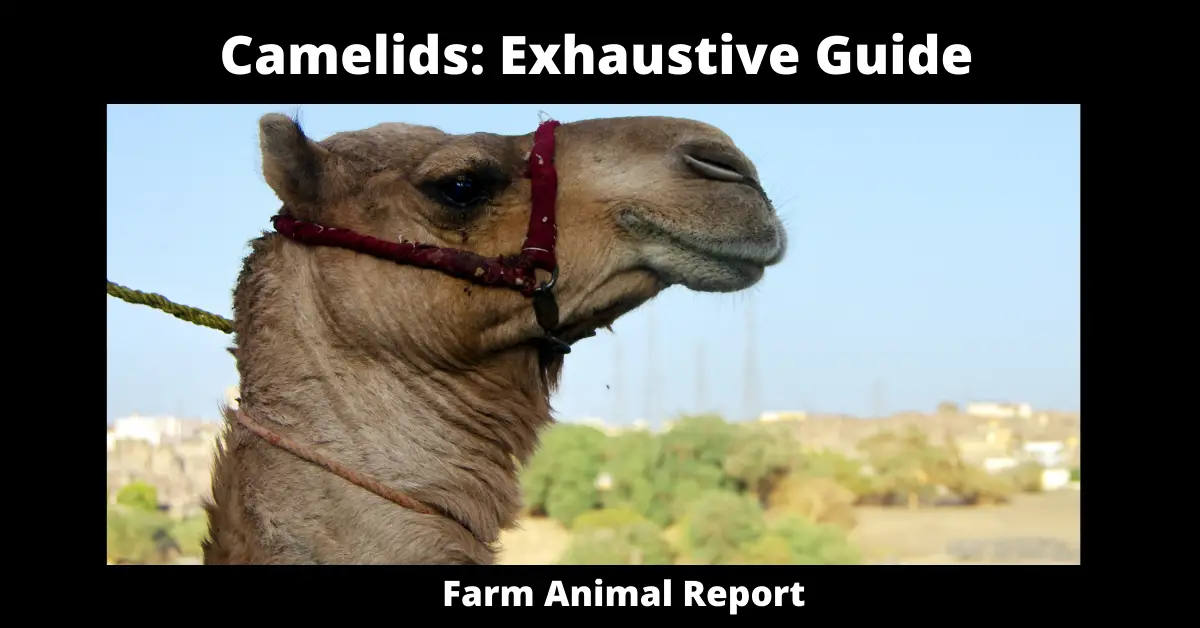- Bactrian camels
- Wild Bactrian camels
- Llamas
- Alpacas
- Vicunas
- Guanacos
As a General Rule Camelids consist of Camels and Llamas. Breaking them down 1) Bactrian camels 2) Wild Bactrian camels 3) Llamas 4) Alpacas 5) Vicunas 6) Guanacos. Camelids are behaviorally similar in several respects, including their walking stride, which involves moving both legs on the same side simultaneously. Camelids have a distinctive “running pace gait,” in which limbs on the same side move in the same rhythm as they walk, with both left legs moving first, followed by both right legs. Camelid feet are devoid of functional hooves, with the toe bones being lodged in a comprehensive, cutaneous cushion on the soles of the feet.
Camelids: Exhaustive Guide
Camelids are members of the family Camelidae, which is the only family in the suborder Tylopoda. Continue reading to learn more about Camelids.
Is a Giraffe Considered a Camelid? Or Are Giraffes Considered to be Camelids?
No giraffe is not considered a camelid. The giraffe (Giraffa) is an artiodactyl mammal native to Africa. It is known to be the tallest living terrestrial animal and the largest ruminant in the world. Giraffa camelopardalis is generally regarded as a single species with nine subspecies, although this is not the case.
However, based on studies into the mitochondrial and nuclear DNA of Giraffa and physical measures of the animal, it has been determined that there are up to nine living giraffe species. Seven more species are extinct, all of which are prehistoric species that have been identified through fossils.
The giraffe’s most identifying qualities are its unusually long neck and legs, its horn-like ossicones, and its peculiar coat patterns, all found in various colors. It is categorized as a member of the Giraffidae family, which includes the okapi, which is its closest extant relative. Their dispersed range stretches from Chad in the north to South Africa in the south, and from Niger in the west to Somalia in the east, with most of their territory in Chad.
In their natural habitats, giraffes live in savannahs and woods. Leaf, fruit, and flower material from woody plants (mainly acacia species) are their primary nutrition source. They graze at heights that most other herbivores are unable to reach.
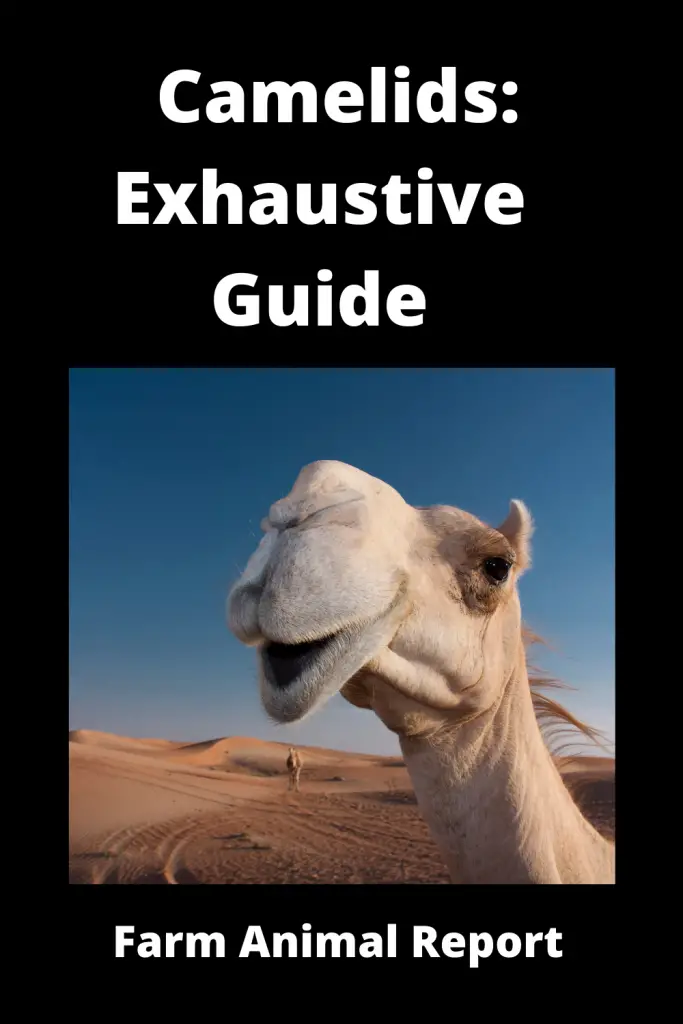
What is the Common Name for a Camelid?
There is no name common name for camelid because it is the whole family’s name with different species. However, every member of this family may have their common words.
Camelids are individuals of the biological family Camelidae, which includes the genera Camelus (which contains natural camel species), Lama (which consists of the guanaco and Ilama), and Vicugna (which consists of the vicuna and alpaca). Camelids are a type of mammal that is related to the camel.
The name “camel” is, on the other hand, frequently used to refer to any of the aforementioned camel-like creatures in general. The one-humped dromedary or Arabian camel (Camelus dromedarius) accounts for around 91 percent of all camels discovered. The two-humped Bactrian camels (Cam. bacteria) account for the remaining 10 percent of all camels found.
Camelids and ruminants split at least 40 million years ago, and while both are foregut fermenters, camelids and ruminants have several distinguishing characteristics that set them apart.
Camelids have substantially smaller red blood cells than domestic ruminants, which is why they are called camelids. Elliptical cells are hypothesized to have developed as an evolutionary mechanism for drought tolerance because they inhibit intravascular sludging.
18 ways Alpaca Farmers make Money
Is the Camelid a Species?
No camelid is a name of a family having different species.
Characteristics
Camelid feet are devoid of functional hooves, with the toe bones being lodged in a comprehensive, cutaneous cushion on the soles of the feet.
Camelids are massive, herbivorous mammals with thin necks and long legs that are purely herbivorous. There are several ways in which they vary from ruminants. Their dentition contains remnants of central incisors in the incisive bone, and the third incisors have grown into canine-like tusks, indicating that they have had their teeth extracted. Besides canine teeth, camelids have tusk-like premolars separated from the molars by a gap, which is also present in humans. Compared to other ungulates, the hind limb musculature is distinct.
The legs are only connected to the body at the top of the thigh, rather than being connected to the body via skin and muscle from the knee upwards. Because of this, camelids must lie down by resting their knees on the ground and their legs tucked underneath their bodies.
They have three-chambered stomachs rather than four-chambered stomachs; their upper lips are split in two, with each part separately mobile; and their red blood cells are elliptical, which is unique among mammals. They also have a particular type of antibody, which lacks the light chain and is inactive. These supposed heavy-chain antibodies are being used to generate single-domain antibodies that may have future applications in the pharmaceutical industry.
In contrast to other animals, camelids have two-toed feet with toenails and soft footpads on the bottoms of their feet (Tylopoda is Greek for “padded foot”). The sole pads of the animal’s feet are made of durable leather and bear the majority of the animal’s weight. To keep a grip on the steep and rocky terrain, the South American camelids have evolved by modifying the pads on the bottoms of their feet.
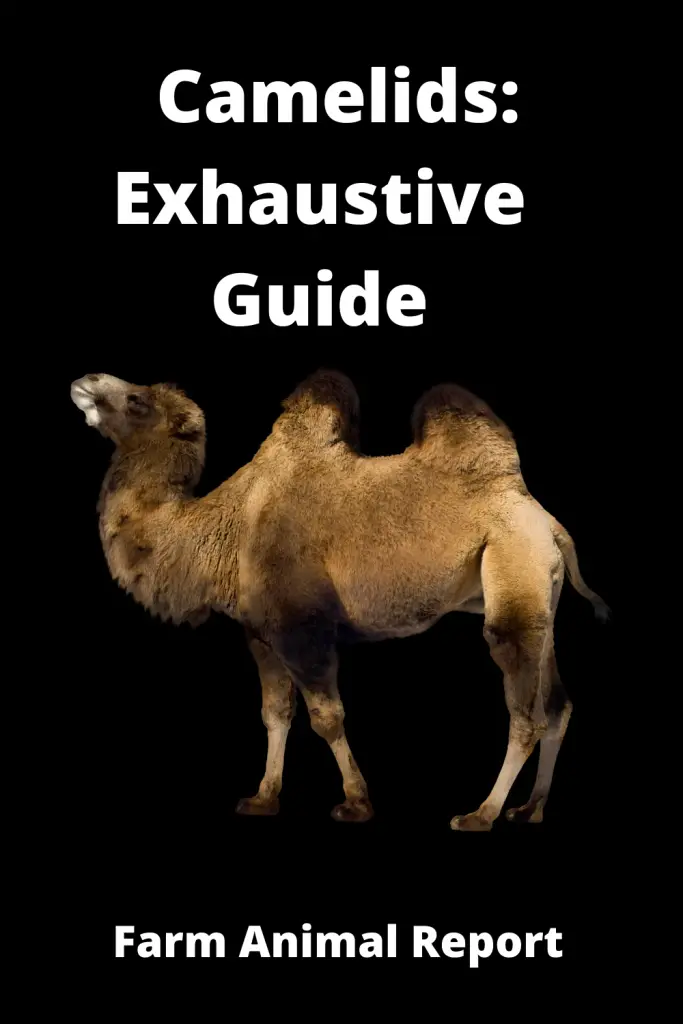
The increased surface area of Camels’ foot pads can be achieved by increasing velocity to alleviate pressure on the feet. More prominent members of the camelid family will often have a greater pad area to distribute weight across the foot better. In contrast to all extant species, many fossil camelids were unguligrade and most likely hooved instead of all surviving camelids.
Camelids are behaviorally similar in several respects, including their walking stride, which involves moving both legs on the same side simultaneously. Camelids have a distinctive “running pace gait,” in which limbs on the same side move in the same rhythm as they walk, with both left legs moving first, followed by both right legs. This guarantees that the fore and hind limbs do not clash while traveling at a high rate. [6] As a result, camelids large enough for humans to ride have a characteristic swaying motion when they are moving.
How Many Different Kinds of Camelids are there? Or What Animals are Members in the Camel Family?
The following Species are present in this family:
1. Dromedary Camels
The seven species that constitute this family can be divided into two categories. Camels can be found in Asia and Africa, among other places. Throughout South America, you may discover llamas, alpacas, and vicugnas. The number of species in this family is enormous, and the majority of them have been tamed.
They are herbivores, and their stomachs are divided into three chambers. Their upper lip is divided into two sections, and they can move each section independently! These creatures have long necks and a small skull and long legs with padded feet, and a pair of huge toes each. They dwell in tiny groups consisting primarily of females and their young, with one adult male present. Although there are currently no living members of the Camelidae family in North America today, the fossil record demonstrates that the family originated and evolved in the region. Scientists have discovered fossilized remains in the La Brea Tar Pits, which are located near Los Angeles.
The members of the Camelidae family that lived in North America were most likely akin to llamas in appearance. Members of this family went to South America and Asia via land bridges, according to historical records. By the conclusion of the last glacial era, they had all but disappeared from North America’s landscape.
Bactrian Camels
Bactrian camels can be found in Mongolia and China’s Gobi desert, where they are called Bactrians. Gobi desert is a frigid desert, and the Bactrian camel has many adaptations that allow it to thrive in such a harsh environment. It has two humps on the rear of its body. The hump is not filled with water; instead, it is filled with triglycerides. When water and food are scarce, the camel makes use of the fat that has been stored.
While the Bactrian camel does not keep water in its humps, it does have a unique sack in its stomach that can hold more than a gallon of water, and it is capable of going for several days without consuming water. Sand is kept out of its eyes and mouth thanks to its bushy eyebrows, long double rows of eyelashes, and nostrils and lips that seal tightly to prevent sand from getting in. The Bactrian camel can stand up to seven feet tall from its shoulder to its feet, and it can weigh up to two thousand pounds. In addition to grass and foliage, the Bactrian camel also eats thorns, bark, and bark twigs. It favors plants that are saline in nature. It possesses thick lips that allow it to consume tough plants. The vast majority of Bactrian camels are already domesticated, and only a few hundred are left in the wild.
Dromedarian Camel
The dromedarian camel is mainly found in the deserts of the Middle East and Africa. It features a hump on one side that retains fat rather than water. Its height is around 6-8 feet from its shoulder to its feet. It has very long legs and padded feet with two toes, which are a nice touch. It has a long, curving neck and a small head with a long nose that can be closed and nostrils that can be opened as necessary. It has a split upper lip divided into two portions, and it can bring its lips together tightly to keep sand out. It is lighter in color than the Bactrian camel and has a shorter coat than the latter. It consumes a wide variety of plants and can digest thick and hard plant portions that other animals cannot chew or swallow. It favors plants that are saline in nature.
Rest of the species included in Camelids
The llama, the alpaca, and the guanaco are three types of camelids. These animals are all native to South America’s Andes Mountains, and they are all herbivores, which means they eat only plants. The guanaco is the only species that can be found in the wild. Both the llama and the alpaca have been domesticated for use in agriculture. The Andes Mountains are home to the guanaco, which can be found in their grasslands. It features a small head, long legs, and a long neck, all of which are characteristic of the species.
From shoulder to foot, it is around 3.5 feet tall. On its undersides, it is white, and it has a shaggy, reddish-brown coat on top. It has a cleft upper lip, similar to that of camels. It primarily consumes grasses and bushes. One adult male and several females, and they’re young, make up the guanaco’s social structure. It can travel at speeds of up to 35 miles per hour. In Chile and Peru, guanaco is considered a protected species. Llamas and alpacas are descendants of the guanaco, which is a South American mammal. The llama was domesticated from the guanaco between 4,000 and 5,000 years ago, according to specific estimates. Llamas were utilized as pack animals in ancient times.
From head to toe, the llama stands between 5.5 and 6 feet tall. This creature’s cushioned feet have two toes, which allow it to grip the rough surfaces of its mountain environment comfortably. The llama is covered in long, shaggy fur. Depending on the animal’s skin color, it can range from reddish-brown to white, black, brown, or a combination of hues. Llama fur is utilized in the production of clothing.
In addition to the guanaco, the alpaca was domesticated from it. The alpaca is usually slightly smaller than the llama in stature and weight. It stands around 5 feet tall from the top of its head to the bottom of its toes. It has the appearance of a llama. In contrast to the llama, the alpaca is not employed as a pack animal, but rather, its soft, shaggy fur is utilized to produce garments.
The vicugna can be found in the Andes Mountains’ plains and meadows, where it thrives. In the Camelidae family, it’s the tiniest member of the group. It stands three feet tall, from shoulder to toe, from the ground. It has a narrow body, a long neck, thin legs, and long, silky fur on its torso and legs. This species’ uppersides are a reddish-brown color, while its undersides are white. It bears a mane of hair on the left side of its breast. The vicugna is also referred to as the vicuna in some circles.
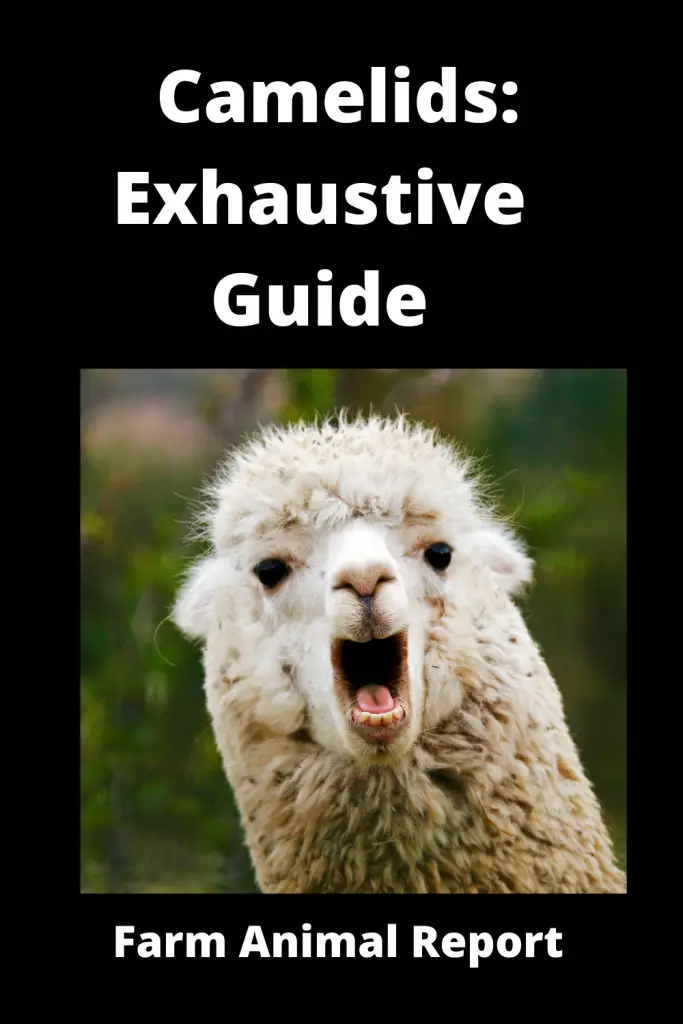
What is the difference between the Alpacas, llamas, Vicuna, and Guanaco?
Although most people are familiar with llamas and alpacas, the Andes Mountains of South America are also home to four more types of camelids: the llama, alpaca, vicuna, and guanaco. Although they have specific distinguishing characteristics, many people confuse them with one another.
LLAMA
It is thought that the llama was domesticated 5000 years ago by the indigenous people of South America as a pack animal for transportation. The most significant distinction between a llama and an alpaca is their weight when it comes to size. A llama can grow to be up to 4 feet (1.25 meters) tall at the shoulder and up to 6 feet (1.83 meters) tall at the top of the head. Adult llamas can weigh between 300 and 450 pounds, depending on their size (135 to 205 kilograms).
Llamas and alpacas are domesticated species, and the wool produced by these two species is the same type of wool that has been utilized since the time of the Incas. Because they required minimal water and were resistant to mountain climbs, the Incas employed them as a mode of transportation across their empire. Llamas are still the only mode of transportation in some sections of the Andes, even today.
In contrast to the guanaco and vicuna, the llama’s coat is available in various colors (including white, grey, brown, and black, solid or spotted). They also have a longer face and neck and characteristic curved ears, distinguishing them from their cousins in the family.
Ropes, rugs, and other goods are made out of wool, while the meat is utilized to make jerky and steak.
ALPACA
The alpaca is a smaller domesticated camelid native to South America that looks similar to the llama. Alpacas are descended from wild vicunas, and they have inherited their excellent fiber and their diminutive stature. It can be kept as a pack animal in the Andes mountains of Peru, Ecuador, and Northern Chile; but, because of its amiable temperament, it can be trained to be a pet in domestic settings.
Another significant distinction between a llama and an alpaca is that the latter has extremely fluffy fleece. In most cases, alpacas are bred for their high-quality wool, which is available in various colors. Alpaca wool is hypoallergenic, warmer, and softer than lambs’ wool, and it lasts longer than cashmere. It is also more durable than silk. Other apparent differences between the two species include their ears, with alpacas having smaller, pear-shaped ears and llamas having more prominent, rounder ears. They also have shorter snouts as well as flatter faces than most other species.
Alpacas are divided into two breeds: Huacaya alpacas, which produce dense, fluffy wool, and Suri alpacas, creating long, straight fibers.
VICUNA
The vicuna is one of Peru’s unofficial national symbols (it appears on its coat of arms). Although it seems to be a deer-like Alpaca, this species is designated as a wild animal by the International Union of Conservation. The vicuna is the most petite and most delicate of the camelids, yet it is also the most endangered. They can grow to be between 2.5 and 2.8 feet (0.75 and 0.85 meters) tall at the shoulder and weigh between 77 and 130 pounds at maturity (35 to 59 kilograms).
They have ears similar to those of the guanaco, and they both have coats that are light brown on the back and white fleece on the throat, belly, and legs, which are comparable to those of the guanaco.
In Peru and Bolivia, Ecuador, Northern Chile, and the Northwest of Argentina, vicunas are protected because they are considered endangered. Vicuna wool is the softest and highest-quality of all the camelids’ wool, making it the most expensive in the world. Vicuna wool is also the most expensive in the world. Thread refers to the “Fiber of the Gods” or “The Golden Fleece” in some circles. Every three years, vicunas are caught and sheared to deter poachers from killing them and destroying their habitat. Vicunas are herded and clipped in Peru by chacus, a collective herding method that has been in use since the time of the Incans.
GUANACO
The guanaco is a tiny mammal that can grow to be around 4 feet tall. It is smaller than the llama and more significant than the alpaca. Guanacos and llamas are closely related, yet there are some essential distinctions between the two animals. Guanacos are brownish in hue with white underparts and grey faces, ears, and necks. Llamas occur in various colors, but all guanacos are brownish with white underparts and grey looks, ears, and necks. In addition, they have small and straight ears.
Guanaco wool is considered good than the llama, but it does not compare to the alpaca or the vicuna. The protected species can survive in highly arid settings and at extremely high altitudes, thriving in the Atacama Desert and the Andes Mountains in Chile.
When it happens to travel to South America, you now know the difference between a llama and an alpaca, as well as how to distinguish them from their wild cousins, the guanaco and the vicuna, should you ever find yourself there.
What Animal is the Closest Relative to a Camel?
Llamas and Alpacas are considered closest relatives of camels. Although you are unlikely to see many camels in Central and South America, you are more likely to see any of the camelid family members mentioned above. Considering that llamas and alpacas are completely tamed animals, the majority of people are familiar with them. Vicunas are part of the camelid family, a specific group of hoofed animals that includes camels and zebras.
How many Camelid Species are there?
There are a total of seven major species in the Camelid family. All these seven species have different strains and subspecies. For example, three species of camels have survived until today. The one-humped dromedary accounts for 94 percent of the world’s camel population, with the two-humped Bactrian camel accounting for only 6 percent of the world’s total. The wild Bactrian camel is a distinct species that is now considered critically endangered by the IUCN.
What is the Relationship between Llamas and Camels? Or Are Alpacas, Llamas, and Camels Related to One Another?
Lama (also known as alpacas, guanacos, and llamas) is a South American animal that is related to camels and, like camels, was domesticated in the past. It is considered the ancestor of the domestic llama, as it is the most prominent wild member of the camelid family in South America. It’s Llama glama, which is the scientific word for llama!
Are Llamas and Camels Cousins?
Yes, camels and llamas are considered cousins! Most people are familiar with llamas and alpacas, which is understandable given that they are domesticated animals. However, vicunas and guanacos are a different story altogether. Vicunas are the closest relatives of alpacas in terms of genetics.
What is the Difference between the Llama and a Camel?
The most significant contrasts between these two fascinating species are summarized.
- Camels can be found in Asia’s hot and deserts, while llamas may be found in South America’s cool and dry mountain ranges.
- Compared to llamas, camels have a more extensive and taller body and a long tail.
- Camels have bushy and lengthy brows, whereas llamas do not have such characteristics.
- Camel’s nostrils can be sealed. However, llamas’ nostrils cannot be sealed.
- Unlike camels, llamas have a thicker coat of fur, whereas camels have a shorter fur coat.
- Camels are distinguished from llamas by the presence of humps.
- Llamas have long ears that are shaped like bananas, but camels have shorter ears.
- The llama does not have lengthy ear hairs, whereas the camel does.
- Camel has a wider foot with toes that are joined by a durable web and a leathery cushioned sole. The llama, on the other hand, has slender feet with more separated toes.
- The llama has an exceptionally long mating phase and a shorter gestation period compared to other mammals. In contrast to the llama, the camel has a longer gestation time and a shorter mating period than these animals.
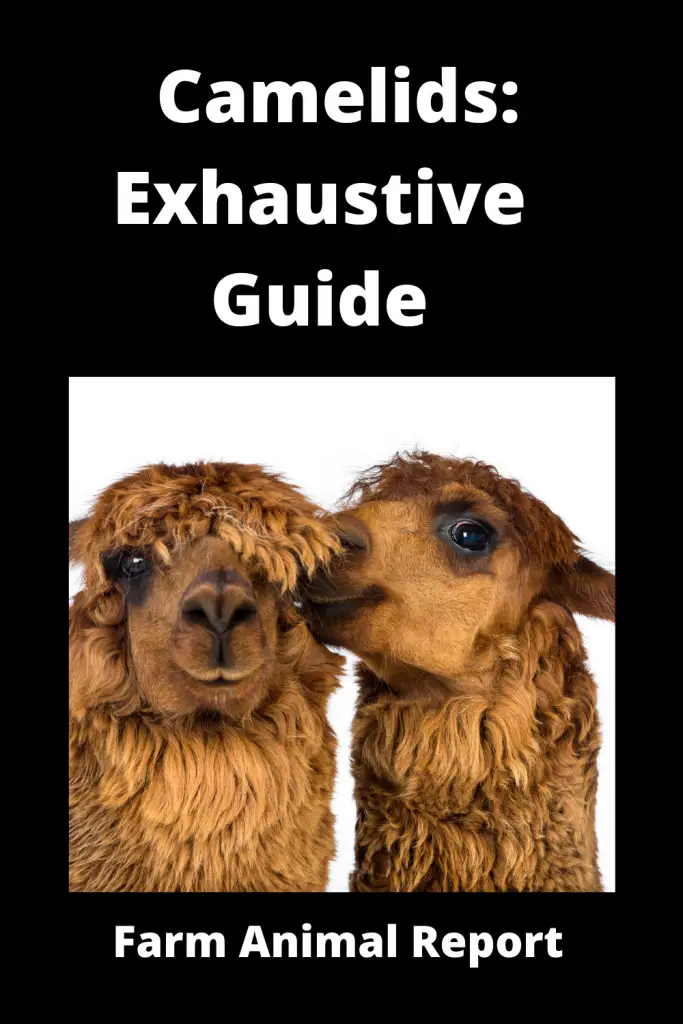
What is the Cross between a Camel and a Llama Called?
Camel-lama hybrids (also known as the Cama) are a genetic cross between an old world camelid (such as the Dromedary or Bactrian camel) and a new world camelid (such as the llama) (Llama or alpaca). Although these two groups can reproduce inside their respective groups, it has only lately been possible for them to cross over into one another. This was the first time a Dromedary Camel and a Llama were intentionally generated; the first was in 1995.
Camas do not have humps, and they have a long, fluffy coat similar to that of a llama, but they do not have horns. The ears of a cama are approximately halfway between the length of a camel and the length of a llama. On the other hand, the Cama acquires the distinctive legs of the camel, making them more suitable for arid environments. Camas’ feet are also a hybrid of the camel’s footpad and the llama’s cloven feet, with a footpad in the middle and cloven feet on the bottom.
Since both llamas and camels have 74 chromosomes, the Cama is considered viable. However, no offspring have yet been created from the cross of two camas. At roughly four years of age, the Cama reaches sexual maturity, and it seems to be more interested in llamas than in camels.
Final Thoughts
The term “camel” is also used informally in a broader sense, where the more accurate word is “camelid,” to refer to all seven species of the family Camelidae: the true camels (which include the three species mentioned above), as well as the “New World” camelids, which include the alpaca, the llama, the guanaco, and the vicuna.


